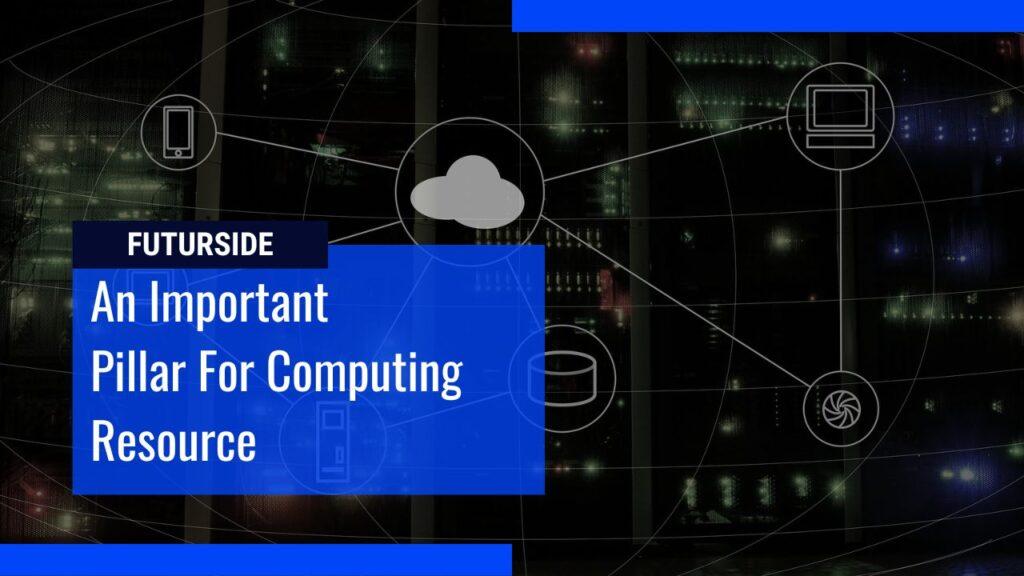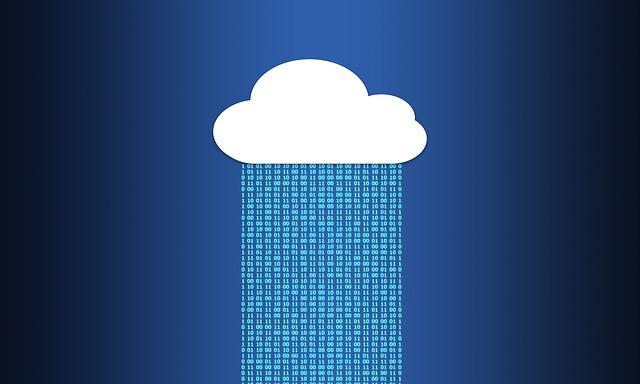Data is created in real-time by human beings. We generate a large amount of information every day through interaction with the equipment and devices that we use as we’re performing various tasks. But also by devices that track our activities to deliver better services.
Data is the byproduct of our daily activities nowadays and it needs to be processed to deliver better user experiences. And processing resources are needed to process these data. During the past decades, cloud computing has been one of the biggest digital trends, allowing the delivery of computing resources over the Internet.
And during that time, most of the devices that were accessing cloud services were PCs and other end-user hardware. Fast forward to today, digital devices accessing cloud services have increased exponentially. Smartphones, wearables, sensors, and Internet of things appliances that transmit information for analysis online are all over the place and keep increasing.
Connecting cameras and other sensors to the Internet facilitates the creation of smart infrastructure that generates more inputs that need to be processed. However, transmitting an increasing volume of data to a remote processing entity is problematic. Transmitting a huge volume of information to cloud-based vision recognition services can overload available network capacity and result in a slow response time.
This is where edge computing comes into play. This type of computing allows devices that relied on the cloud to process some of their own information. It is placing workloads as close to the edge, as to where the data are being created and where actions are being taken. Bringing computing capacity closer to where input is created to reduce response time. So, what exactly is edge computing?

Contents
what is edge computing?
Edge computing is a distributed information technology architecture that distributes computing resources closer to the source of data. It doesn’t mean that cloud computing will disappear, it just means that processing power will come closer to where the data is produced. This can be accomplished by connecting client devices to a nearby edge module.
Edge gateways and edge servers are examples of such devices. They are used to process information and ensure a smoother operation. Edge processing is a growing trend for many reasons, including cost and security. It is used all around us and its usage continues to grow. Every day, we interact with mobile apps, streaming media and connected devices.
Our experiences demand instant responses to our commands. Real-time processing of information is necessary to make these interactions seamless and enjoyable. Edge computing solutions reduce the amount of data we send to the cloud and allow devices to make decisions in real-time as input is analyzed near their source.
Information is the lifeblood of the modern world. It provides valuable insight into a business’s operations and supports real-time control of critical business processes. Today’s businesses are drowning in data. From sensors deployed in remote locations to IoT devices operating in inhospitable environments, businesses are collecting vast amounts of inputs.
If the data is processed close to the source, it can speed up processes and improve performance. Edge processing reduces network bandwidth demands and adds an additional layer of security. As the world continues to become more connected, distributed computing system is a great way to make it more efficient.

Why do we need edge computing?
Distributed IT architecture is gaining popularity as a technology for reducing network bandwidth and boosting data usage in businesses. Edge devices can filter, compress and analyze information locally, preventing bottlenecks and ensuring that only the most valuable information is passed through the network.
The goal of edge computing is to move computation and data storage closer to the source of input. This approach allows real-time processing and spares primary computing resources. Furthermore, it reduces latency and network costs. This technology allows us to use our network resources for more important tasks, such as processing customer information and analyzing sales data.
The increasing number of internet-connected devices and the increasing demand for high-bandwidth data are driving the need for distributed IT architecture. It allows companies to extract the most value from input at every touchpoint. And because the technology is based on standards, edge computing solutions are available and cost-effective.
Edge computing architecture enables many devices to operate over a small, efficient network. Local data-generating devices use adequate bandwidth for local storage and local servers provide essential edge analytics and data reduction. As a result, the information collected at the perimeter can be analyzed and made into action in real-time.
According to MarketsandMarkets, IoT and smart applications will drive the need for distributed processing systems. It will benefit all industry sectors and create immense opportunities for vendors. It will affect all layers of the technology stack, including processing, storage, standards and applications.
With these benefits, the Internet of Things can deliver more personalized and relevant information to consumers. A study indicates that up to 85% of executives believe edge processing is a key strategic investment for their companies. For industrial businesses, this processing resource is increasingly important in improving operational efficiency.
Its use cases include predictive maintenance, condition-based monitoring and optimization of equipment. It also supports resilient decision-making and improves process efficiency. This information helps supervisors identify and address issues before they result in unnecessary downtime.
The advantages of edge computing extend beyond manufacturing. It is also a key enabler of smart perimeter and cloud-based artificial intelligence. It provides low-latency and zero-latency connectivity and helps run real-time applications without delays or interruptions, which is especially useful for IoT devices.
Edge-computing applications also enable applications to develop rules and encryption for data transfer and security. And since devices are increasingly becoming smart, the importance of edge computing can’t be understated.
Importance of edge computing
One importance of edge computing can be seen in the iPhone. The company has offloaded security concerns to the user’s device, while centrally managing the definition of computing work. As a result, iPhone users don’t have to worry about complex security setups. They simply connect to a nearby edge module. Then, that data is available to other devices via the cloud.
With distributed computing, we can expect to experience more secure experiences with our data and services. It also solves the bandwidth and security issues of IoT. In contrast, a security camera may stream footage to the cloud but a dozen cameras would cause bandwidth problems.
Edge-processing smart cameras only save footage that is important to them and send the rest to the cloud server. In addition, this technology makes it possible for organizations to install more cameras without overloading the network infrastructure. This type of processing has the potential to improve the quality of life, make everything easier and more secure and create a safer place.
In addition to boosting safety, distributed processing resources can enhance retail inventory accuracy. By analyzing data from in-store cameras, employee safety devices, and other sources in near real-time, retailers can optimize their inventory management, boost their supply chain efficiency and increase the overall shopping experience.
One such example is the development of sensors and artificial intelligence (AI) solutions. The software can track occupancy and monitor movement and customer activities to improve security as well as increase sales. Edge-computing devices can process standard IT workloads like data from POS scanners.

By combining data with video analytics, retailers can ensure that they’re actually taking the items scanned. By leveraging edge-processing solutions, retailers can stay ahead of the competition and provide the best experience for their customers. This technology is rapidly gaining popularity as more businesses realize the benefits of edge computing technologies.
Distributed IT infrastructure allows for flexible and mobile manufacturing. Through shared-use models, the network infrastructure can be deployed and run on the edge of the manufacturing process. It also enables real-time automation of manufacturing processes, encouraging autonomous operations in factories.
Ultimately, computing near data sources creates an agile business ecosystem for businesses, promoting higher performance and cost-efficiency. Any business needs to be able to use the latest technology to stay competitive and stay profitable.
Benefits of edge computing
Edge processing is a new way to process and store information in dense geographic distribution. It can greatly improve big data analytics and location-based mobility. With this new technology, administrators can run massive real-time data analytics and minimize backhaul traffic. It also reduces the need for costly repairs and increases machine uptime.
Error codes generated by edge processing are relevant to technicians and reduce troubleshooting time. Edge devices can perform safety monitoring and shut down equipment automatically when preset limits are exceeded. Industrial sensors can monitor factory equipment and improve safety, while smart cities can improve traffic flow and monitor energy efficiency in smart buildings.
As IoT infrastructure expands, distributed computing will play an increasing role in reducing latency and improving user experience. By pushing advanced services and data planes to the extremity, administrators will be able to deliver rich content faster, more efficiently and cheaper.
Using edge processing will enable better data access, corporate analytics capabilities and end-user computing. Another benefit is that it helps companies reduce costs by keeping data closer to its source. By doing so, they can prevent sensitive data from moving long distances.
Moreover, distributed processing architecture helps encrypt information that is heading to cloud-based servers and makes it more secure against cyberattacks. It can be done with very little cost and effort. Plus, it saves energy as it consumes less electricity and cooling. Further, edge devices are becoming smarter and can handle tasks that were impossible just a few years ago. This means real-time applications and insights are powered by edge data.
With the emergence of edge devices and a growing number of edge computing networks, this technology is quickly becoming an important part of digital transformation. Its capabilities make it more feasible for organizations to take advantage of data analytics, as well as improve their device performance. It also reduces the need for expensive cloud resources.
While cloud-based architectures are highly scalable, edge processing is more efficient and less expensive. In addition to reducing latency and power consumption, this computing resource is faster. It can reduce overall traffic loads in an enterprise. As a result, it can be a better choice for organizations that require high-quality data access.
So while cloud-based architectures remain essential, distributed computing can help organizations make the most of the benefits of both cloud and edge computing. As mentioned, distributed computing can improve service latency and improve the quality of service. It also allows for more dynamic data distribution, resulting in a superior user experience.
It also supports emerging applications like Metaverse and densely distributed data collection points. And it can add a fourth dimension to Big Data by optimizing information collection and processing at its source. The distributed computing market is it’s expected to gain more attention as things get connected. As the internet continues to connect everything, edge computing becomes a necessity.

0 Comments